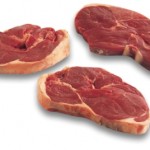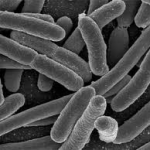
Tony Egan' Greenlea Premier Meats new managing director
Greenlea Premier Meat’s new managing director Tony Egan spoke at the Fifth World Halal Research Summit in Kuala Lumpur on behalf of the NZ meat industry – the first time a New Zealander has been invited to do so. He talks to Food NZ about his return to the Egan family company and the New Zealand message he took to the Summit.
Egan is enjoying returning to the company he originally joined in 1993, starting on day one working on the beef chain.
“It’s great to be back,” he says, after his 11 years since he left his role as managing director (marketing and finance) in 2001. Not that he’s been exactly idle in between: he spent five years as chief executive for AFFCO New Zealand, which had a turnover of $1.5 billion and 3,500 staff, before moving on to head up 1,700 staff and 130 locations of New Zealand’s largest quality assurance organisation AsureQuality for another five years.
He rejoined Waikato-based Greenlea Premier Meats in December 2011. The company these days has 360 staff, employed over two sites in Morrinsville and Hamilton, and a throughput of 180,300 animals last season. The loyal staff seem to be happy with the family values promulgated by the company, which include personal touches such as Easter eggs, Christmas hams and a family open day at Morrinsville where families are invited to come in and see what their parents do at work. As one employee Zane Sayer puts it on the website, “Greenlea has a very pleasant work atmosphere and we take comfort in knowing we are able to work through the entire year.”
Having worked in private and public companies plus a State-Owned Enterprise, Egan reckons he’s covered off most of the business models now and is looking forward to putting his skills to work, both for the family company and also for the industry. He’s already a new council member of the Meat Industry Association (MIA).
His knowledge of the evolution of halal processing requirements for a variety of Muslim markets over the years, plus the fact that AsureQuality was involved in independent testing for porcine and alcohol traces on behalf of halal authorities in its 32 staff Singaporean office, made Egan the ideal contender to speak to the Fifth World Halal Research Summit in Kuala Lumpur on behalf of the industry.The Summit was held in conjunction with the Seventh World Halal Research Forum. With 1,000 delegates expected from 40 countries it was an important opportunity for New Zealand.
MAF: best halal service provider 2011
The invitation follows on from an award received by the Ministry of Agriculture & Forestry (MAF) for best service provider at the 2011 Forum – the first time a non-Muslim country had received the award and came a year after MAF implemented the Animal Products (Overseas Market Access Requirements for Halal Assurances) Notice, Egan explains.
“It’s a great credit to the work MAF’s director of market access Tony Zohrab and the rest of the MAF team have done in this area.”
Currently involving 48 certified processing plants, employing 214 qualified halal slaughtermen in this country, New Zealand’s market for exports of red meat and other edible products to Muslim markets was worth nearly $490 million to the year end June 2011, according to the MIA. With its diverse markets, and offering an outlet for reducing reliance on traditional trading partners, halal represents a sizeable cross-border sector for the meat industry to focus on to grow market share and value in line with the Red Meat Sector Strategy.
Evolution of thought
The message Egan will be taking to Kuala Lumpur on behalf of the industry is that the trade has moved away from the supply of frozen carcases to Iran in the 1970s and 80s towards newer markets in Asia.“There has been an evolution of thought and the New Zealand industry has taken the time, over the last 15-18 years, to better understand those Asian consumers,” Egan says, adding that the journey of understanding has led religion and science to come together.
The perfect example of that understanding is the innovative New Zealand-developed method of halal slaughter that through stunning livestock insensible before slaughter satisfies both Muslim religious requirements for live slaughter and New Zealand and other Western consumers’ requirements for humane slaughter. But that’s only part of the stringent processing standards in place here today as part of the accredited halal programme, which also include: segregation of halal product, supervision during processing, the training and certification of all halal slaughtermen and the commitment and urgency of the workforce to ensure compliance to halal standards.
The Halal Notice represents the evolution of thought and has formed a good foundation for the industry, giving customers an all-important government assurance that what they understand is happening is in fact occurring, Egan says.
“The paradigm has shifted from a one-dimensional process to a multi-dimensional one.”
What does the halal customer need?
The concept of halal, defined by the Qu’Ran as ‘allowed’, ‘permitted’ or lawful’ has slowly become accepted as a consumer lifestyle choice, not only encompassing religion and food, but also finance, non-food products and logistics. It provides a set of laws and guiding principles and separates out those animals that are prohibited ‘haram’ and those permitted ‘halal’, as well as outlining methods of slaughtering, prohibits consuming blood or blood products and intoxicants, such as alcohol).
Halal customer’s needs focus on the concept of ‘tayyib‘, Egan explains: “That food is wholesome, nutritional and safe. It brings in many concepts including environmental sustainability, safety and animal welfare and is not particularly onerous for New Zealand processors to provide.”
Although there are a number of other meat exporting countries servicing halal markets, he believes that New Zealand has the opportunity to take a unique approach, particularly in the innovation of processes in the wholesomeness and in the wholesomeness and food safety areas for which this country is renowned.
With an estimated 1.5 billion Muslims around the globe, halal markets are still growing. Indonesia alone, New Zealand’s largest halal market, was worth over $120 million last year and there is a growing range of other halal customers – Singapore, South Africa, China, France and the US (where there are over 10 million Muslims). Customers are interested not only in the meat itself, but also the by-products like offal. There is a growing halal market for raw materials for pharmaceutical and cosmetic use, where Egan says there is also a role for AsureQuality to play
Challenges ahead, however, include dealing with restrictive tariffs and quotas, limiting New Zealand’s access to various markets which the meat industry is working closely on with the Ministry of Foreign Affairs & Trade.
Another area is achieving a consistent understanding of what halal certification means across the many different markets.
“New Zealand’s approach is becoming increasingly accepted as the sensible approach,” Egan says, adding that his speaking opportunity outlined what New Zealand Inc is capable of and what’s possible for the future.
Tony Egan spoke at the Fifth World Halal Research Summit, 4-5 April 2012 Kuala Lumpur, Malaysia.
Reproduced with kind permission of Food NZ magazine.
 Differences more apparent than real
Differences more apparent than real






